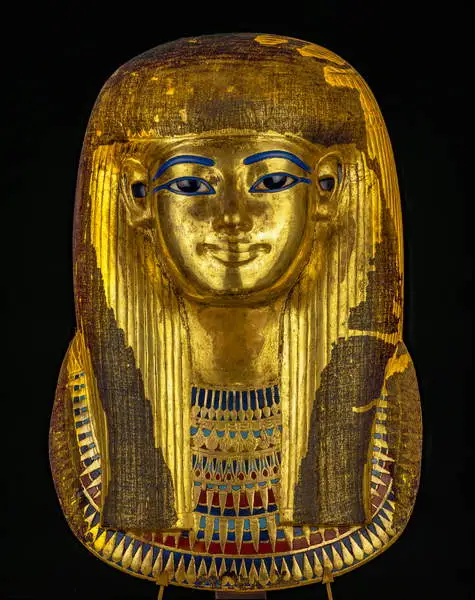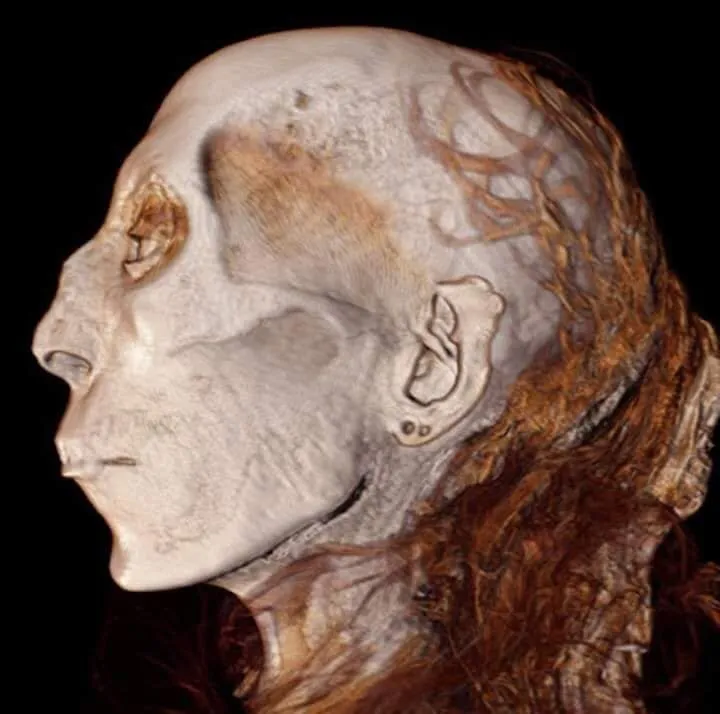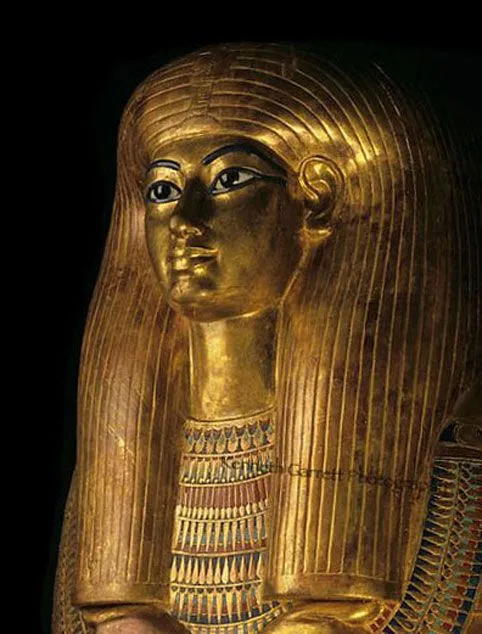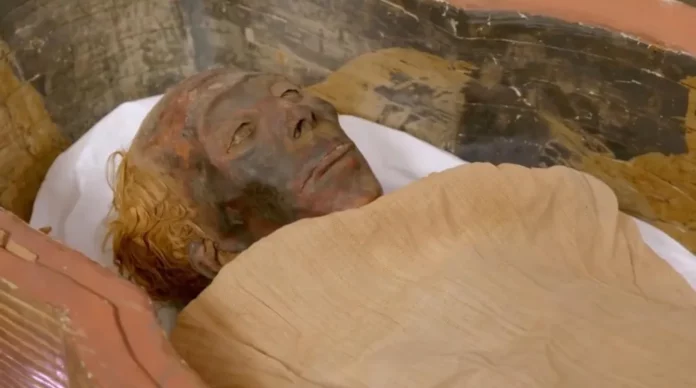In the land of ancient Egypt, Yuya and Thuya’s story began in the bustling city of Akhmim, known to the ancient Egyptians as Ipu, the capital of the Ninth Nome of Upper Egypt. Though they were not of royal blood, their noble lineage would pave the way for their descendants to rise to great prominence.

Yuya and Thuya, who lived in a time when Egypt was flourishing under the rule of powerful pharaohs, became the parents of Queen Tiye. Tiye would go on to marry King Amenhotep III, becoming his beloved Great Royal Wife. The influence and status of Tiye were immense, and much of it can be traced back to the noble origins and the upbringing she received from Yuya and Thuya.

Their family extended beyond Tiye, with at least one other child known today: a man named Anen. Anen held several prestigious titles, such as “Chancellor of Lower Egypt,” “Second Prophet of Amun,” and “Sem-Priest of Heliopolis.” Some historians even suggest that King Ay might have been another son of Yuya and Thuya, further intertwining their lineage with the royal bloodline.

Egyptian Museum, Cairo. JE 95254
Thuya herself was a woman of many titles, particularly within the religious cults of the time. She was known as the “Chief of the Entertainers” of both Min and Amun and was a “Singer of Hathor,” hinting at her role as a priestess and temple singer. Her influence and duties were significant, reflecting her standing in the society of ancient Egypt.
When Yuya and Thuya passed away, they were honored with a burial in the famous Valley of the Kings, in a tomb known as KV46. This tomb was discovered in February 1905 by British Egyptologist James E. Quibell during excavations funded by American millionaire Theodore M. Davis. The discovery of their tomb provided a wealth of information about their lives and the era they lived in.
The well-preserved mummy of Thuya offers a glimpse into her final moments and the care taken in her embalming. She was around 50–60 years old at her death, standing 145 cm tall. Her body was found within a coffin, wrapped in a large linen shroud with her feet and face exposed. Thuya’s mummy, which has the inventory number CG 51191, showed several unique features. Her spine exhibited thoracolumbar scoliosis, and she had various dental issues, which were common among Egyptian mummies, including Ramesses II.

Hawass, Z.A., Saleem, S.N. and D’Auria, S. (2016)
The C.T. scans of Thuya’s mummy revealed a smooth lateral curve of her spine, with a Cobb angle of 25 degrees. Her teeth showed signs of wear and damage, likely occurring during her lifetime. The scans also showed an empty skull cavity, as the brain was removed during mummification, a common practice to prevent decomposition. Linen balls were placed in her eye sockets to give a realistic gaze, and her heart remained in her chest, in line with the Egyptian belief that the heart was the seat of the soul.

Thuya’s body was carefully packed with resin-soaked linen and other materials to maintain its shape, and her legs remained in good condition despite some postmortem fractures. The embalming process included packing her nose with linen to prevent collapse, ensuring that her nose remained prominent for the breath of life in the afterlife. Her nose, though slightly deviated, still showcased the hooked aquiline nose prominent among Egyptian mummies.

Met Museum. 26.8.148a, b
The scent of perfumes and resins still lingered when her coffin was opened, a testament to the care and reverence given to her embalming. Thuya’s legacy lived on through her daughter Tiye, her grandson Akhenaten, and her great-grandson Tutankhamun, each playing a pivotal role in Egypt’s storied history.

“The outer coffin…is made of wood carved and covered with stucco gilt. It is mummiform in shape, the wig is long and the hair is represented by bands of incised lines. The features of the face are very finely modeled. The eyes, eyelashes, and eyebrows are inlaid; the eyes are of white marble and obsidian, the eyelashes and eyebrows of opaque violet glass.” The inner coffin is also of wood covered with stucco gilt. Newberry remarks that the “broad necklace is very elaborate, and consists of fifteen rows of conventional flowers and petals and drop shaped beads, which are inlaid in coloured glass.” – Percy E. Newberry,
Thus, the story of Yuya and Thuya, though beginning in the modest noble circles of Akhmim, intertwined with the grand tapestry of Egyptian royalty, leaving an indelible mark on the annals of ancient history.



Source: https://egypt-museum.com/the-mummy-of-thuya/




